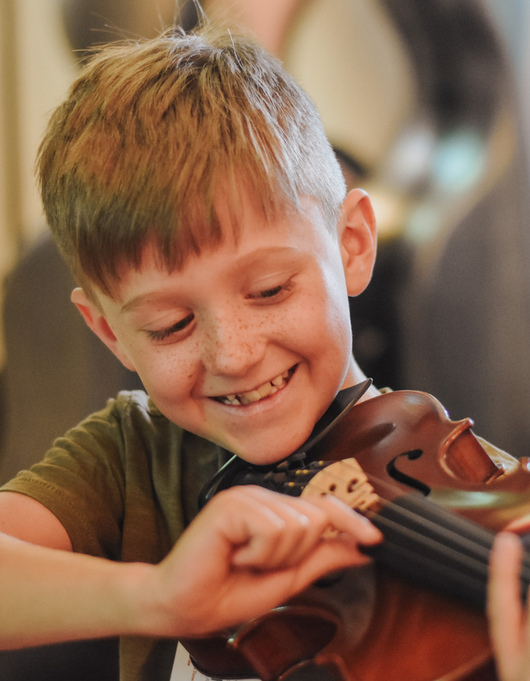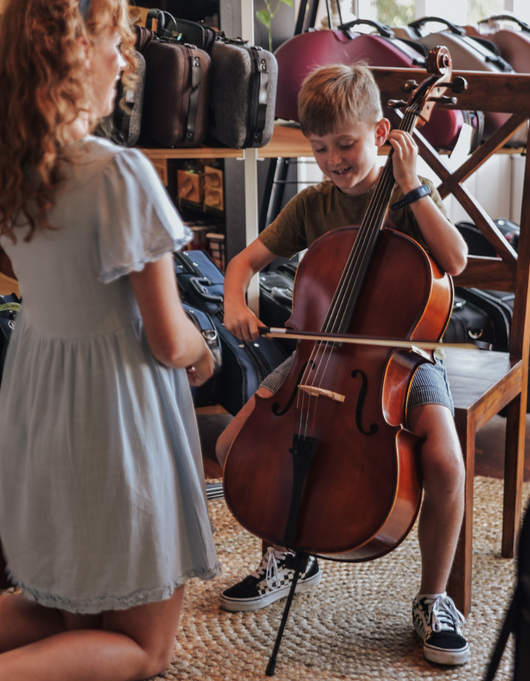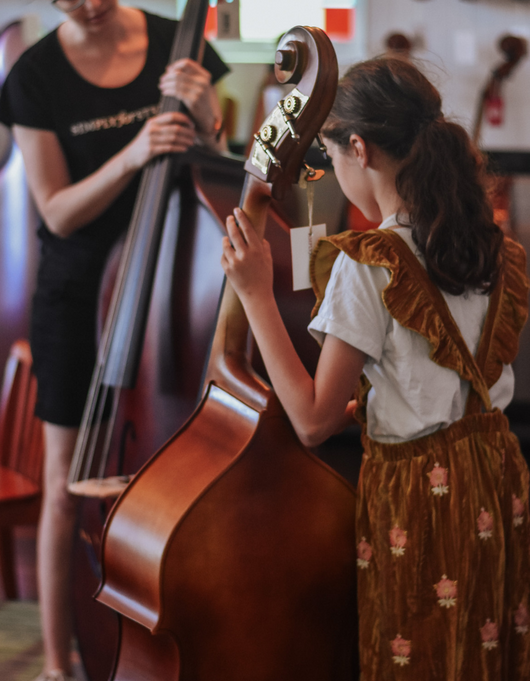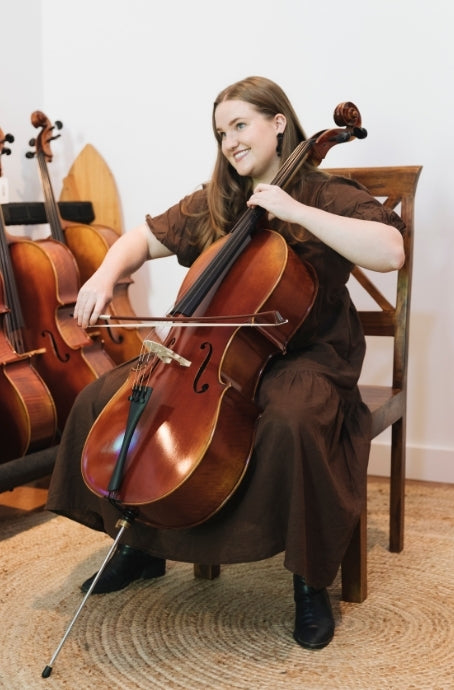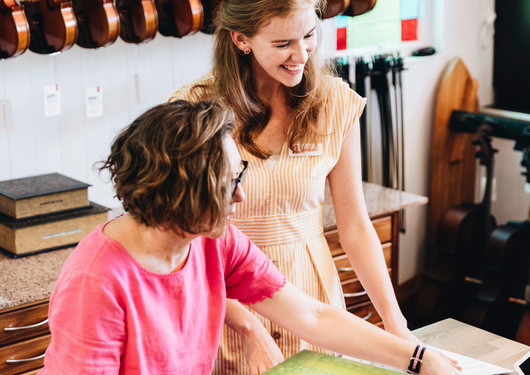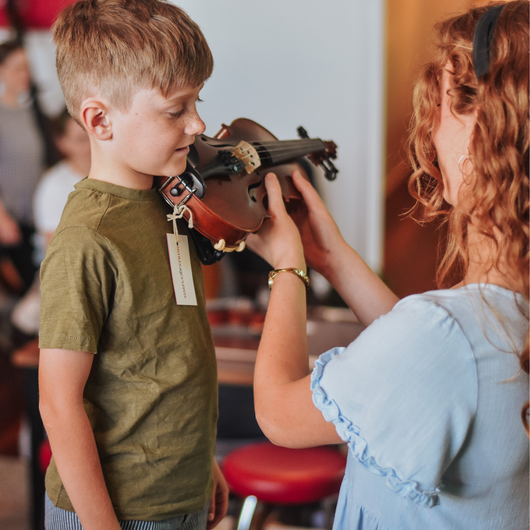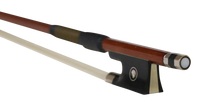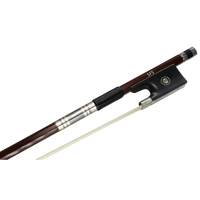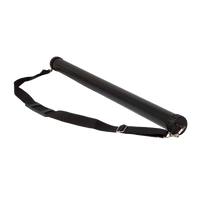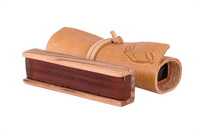Bows Explained: Everything You Ever Wanted to Know About Bows for String Instruments
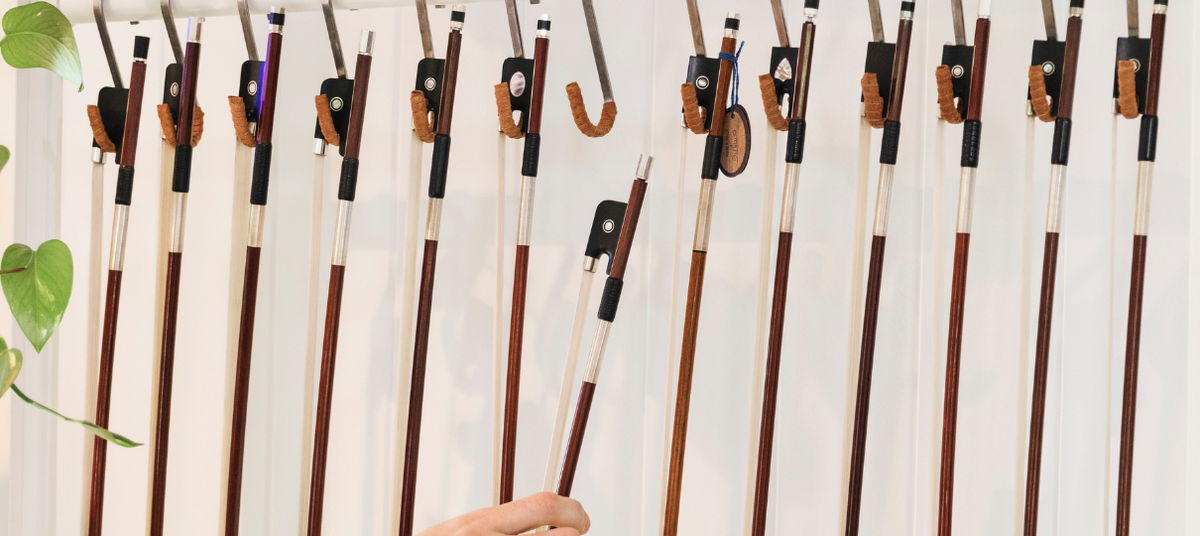
Simply for Strings stocks a wide range of bows for violin, viola, cello and double bass. Looking to learn more about this important tool? Read on!
The violin wouldn’t be much without a bow, and yet until last century, it was considered almost an accessory along with the case and the tuning fork. Having said that, there have always been bows of exceptional craftsmanship and beauty admired by those with eyes to see.
The development of the violin bow to its modern form was perfected by François Tourte (1774-1835). Trained as a watchmaker, he took to bow making as did his father and brother. After a painstaking search, he came to the conclusion that pernambuco was the ultimate material for bows given its weight, strength and elasticity. Pernambuco was used in early times as a colourant for dyeing fine clothes. It grows in South America and Pernambuco is, in fact, a region of South America.
Until 1775 the bow’s length and weight hadn’t been established as a standard.
Working on the advice of famous virtuosi such as Viotti, Kreuzer and Rode, Tourte introduced many features still used today and established the optimal length of the violin bow at 74 or 75 cm in all, the viola bow at 74 cm and the cello bow at 72-73 cm.
Bows are generally made by specialist bow makers although some violin makers have made bows as well. One of the tasks which a violin maker is trained in, however, is the rehairing of bows. Rehairing a bow is a time consuming and troublesome job. The main reason for this is that to rehair a bow properly without damage requires lots of patience and skill. Too many good bows have been badly damaged by people who have learned bow rehairing from a book.
Bows should be entrusted only to trained professionals. Among the worst of the damage we come across are:
- Split heads and frogs from forced wedges.
- Scratched and indented metal fittings and pearl.
- Distorted stick shapes due to uneven tension.
- Cracked sticks or (the worst) broken sticks.
If you have a damaged bow needing repair, get in touch with us here.
A bow which is being used regularly generally has to be fitted with new, good quality hair at least twice a year. Overused hair has lost its capacity to hold the rosin properly and the player will notice the bow’s lack of efficiency to produce a good tone.
It is often heard that horsehair for bows must be quite white and exceptionally smooth. While it is true that irregularities in the hair’s structure can cause noise, hair is a natural material and is seldom perfect. Completely white hair is very rare unless it has been bleached. The hair’s whiteness is not necessarily its most desirable attribute. Often the finest hair is anything from light-beige to butter coloured. Bleached hair is generally brittle and should be avoided as it doesn’t last very well.
Some say that bow hair must be from Siberia and that it must only be from stallions and never mares. The story goes that mares' tails are always drenched in urine and therefore corrode and deteriorate faster. However fine bow hair is also exported from South America, China (Mongolia), Canada, Hungary and Russia.
The thickness of horsehair is around 0.4mm and it is entirely made up of dead cells which have been converted into a protein called keratin. Keratin is the favourite food of Anthrenus Museorum or the museum beetle (bow bug), the larvae of which feed on all kinds of animal hair. If you should come across such a creature, don’t panic. It is a very slow animal and can easily be brushed or vacuumed from a violin case. Cut out the old hairs and burn them as well as treating the case with a common insecticide (like Mortein) that kills larvae. These bugs detest sunlight so an old violin case with half-eaten bow is well kept in open sunlight for a while. The surface of the hair is covered with scales overlapping away from the “horse end” of the hair.
The most important characteristics of a good bow for the player are:
- Ability to sustain tension on the hairs without having to tighten the screw too much.
- Ability to maintain this tension and being flexible without the need for unnecessary weight.
- A nice well shaped camber right to the tip of the bow, which results in the stick touching 2/3 of the length of the bow from the frog, when the frog and head are resting on a flat surface and the bow is under no tension.
- A good amount of hair - the amount of hair to fit into a bow depends almost entirely on the bow’s build and style decided by its maker. Although it is often said that a violin should have ca. 150 hairs, a viola 175 and a cello 175-200, this varies tremendously as each bow has its own size of mortice in the head and frog and every bow has a camber and graduation which tolerates a certain amount of hair. Ensure the hair looks full and is bunched up in a certain part of the frog.
Rosin is what makes the bow stick to the string until it slips back in a continual cycle which generates the bowed sound. It is made of colophony – the residue from the distillation of turpentine. It comes in various grades depending on the type of distillation. Pure colophony is far too brittle to use on its own for violin rosin and makes an unpleasant scratchy sound. Therefore it is generally mixed with other substances to modify its consistency. Most rosin will contain small amounts of oil to plasticize or soften it and sometimes there are additions of alkaline solutions to neutralize the colophony which is quite acid. The acidity of colophony can be a hazard to the varnish if it is allowed to build upon the instrument.
To view our range of bows available to purchase online, please click here.
Learn more about caring for your bow
- Make sure you don’t over-tighten your bow. You should just be able to fit a pencil between the hair and the middle of the stick once you have tightened it and always make sure there is plenty of camber (curve) in the stick.
- When rosining your bow use long slow strokes back and forward across the entire length of the hair. Shop our entire range of rosins here. If you don’t have enough rosin on your bow the hair will not grip the strings and the sound produced will be patchy and uneven. If you put too much rosin on your bow, excess powder will coat your bow and instrument and the tone will become scratchy and dull.
- Always loosen your bow after playing. If you don’t take the tension off your stick it can lead to warping, a loss of camber (the curve in the stick) and the stretching of hair.
- Avoid touching the hair of your bow. The oils from your skin will be absorbed by the hair which will make it harder for rosin to adhere and result in a loss of tonal quality.
- Bows need rehairing every 6 to 12 months (depending on use and seasonal changes). Hair stretches and becomes brittle with use. Hair will shorten in dry conditions and lengthen in humid conditions.
- Do not subject your bow to any undue stress i.e. dropping, holding it by the tip, tapping it on your music stand or push the tip into the floor.
Need more tips? Get in touch with our expert team members here.
About the author: Hans Johannsson makes violins, violas, cellos, double basses and various other stringed instruments. His passion for the violin started at an early age in the workshop of his grandfather Gudjon Halldorsson, a cabinet maker in Reykjavík, Iceland. After having finished his studies at the Newark School of Violin Making in Great Britain with a diploma of distinction, under Maurice Bouette and Glen Collins in 1980 and subsequently receiving a masters diploma from the Icelandic Arts and crafts council in 1982, he has been making instruments for professional musicians in many countries.



